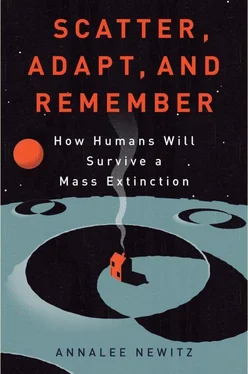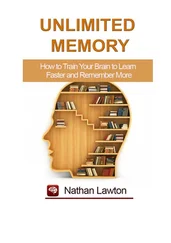13. The differences between ancient and medieval cities are just as stark: For much more nuanced representations of historical urban development, see Kostof, The City Shaped ; Josef W. Konvitz, The Urban Millennium: The City-Building Process from the Early Middle Ages to the Present (Carbondale and Edwardsville: Southern Illinois University Press, 1985); and Richard T. LeGates and Frederic Stout, eds., The City Reader (New York and London: Routledge, 1996).
14. As Harvard economist Edward Glaeser puts it in his book: Edward Glaeser, The Triumph of the City: How Our Greatest Invention Makes Us Richer, Smarter, Greener, Healthier, and Happier (New York: The Penguin Press, 2011).
15. Urban geographer Richard Walker believes the San Francisco Bay Area provides: Personal interview, June 16, 2012. For Walker’s insights into San Francisco as an environmental city, see also his book The Country in the City: The Greening of the San Francisco Bay (Seattle and London: University of Washington Press, 2007).
CHAPTER FIFTEEN: DISASTER SCIENCE
1. experimental reconnaissance robots: See, for example, “Robots Converge on Disaster City,” Disaster Preparedness and Response: TEEX (March 22, 2010), http://www.teex.org/teex.cfm?pageid=USARresc&area=USAR&storyid=984&templateid=23.
2. At Oregon State’s tsunami lab: Officially called the O. H. Hinsdale Wave Research Laboratory, the facility makes its data publicly available so that other researchers can build simulations based on what other scientists have learned about wave behaviors. A good example of how this data-sharing works can be found in this paper: T. E. Baldock, D. Cox, T. Maddux, J. Killian, and L. Fayler, “Kinematics of Breaking Tsunami Wavefronts: A Data Set from Large Scale Laboratory Experiments,” Coastal Engineering 56 (May–June 2009).
3. I met the UC Berkeley civil engineer Shakhzod Takhirov inside a three-story warehouse: Personal interview, February 16, 2012.
4. Richard Iverson has created hundreds of landslides to learn more: Personal interview, June 26, 2012. You can also see an incredible collection of videos from Iverson’s experiments on the USGS Debris Flow Flume site: http://pubs.usgs.gov/of/2007/1315/.
5. George Thomas, a former structural engineer: All comments are from his public presentation “Smarter Cities,” at Washington University in St. Louis (March 7, 2012).
6. Japan was unprepared for the calamity: Emily Rauhala, “How Japan Became a Leader in Disaster Preparation,” Time (March 11, 2011).
CHAPTER SIXTEEN: USING MATH TO STOP A PANDEMIC
1. David Blythe manages health surveillance for the Maryland public-health department: Personal interview, January 26, 2012.
2. “In this classic urban-plague scenario”: N. C. Stenseth, B. B. Atshabar, M. Begon, S. R. Belmain, E. Bertherat et al., “Plague: Past, Present, and Future,” PLoS Medicine 5 (2008): e3.
3. In its report, the WHO speculated: “WHO Issues Consensus Document on the Epidemiology of SARS” (October 17, 2003), http://www.who.int/csr/sars/archive/epiconsensus/en/.
4. Tini Garske is a mathematician and researcher with the Imperial College London’s: T. Garske, H. Yu, Z. Peng, M. Ye, H. Zhou et al., “Travel Patterns in China,” PLoS ONE 6 (2011): e16364.
5. “SARS quarantine in Toronto was both inefficient and ineffective”: Richard Schabas, “Severe Acute Respiratory Syndrome: Did Quarantine Help?” Canadian Journal of Infectious Diseases and Medical Microbiology 15 (July–August 2004): 204.
6. Brian Coburn, and his colleagues claim that school closures: Brian J. Coburn, Bradley G. Wagner, and Sally Blower, “Modeling Influenza Epidemics and Pandemics: Insights into the Future of Swine Flu (H1N1),” BMC Medicine 7 (2009): 30.
7. Laura Matrajt, a mathematician at the University of Washington in Seattle: L. Matrajt and I. M. Longini, Jr., “Optimizing Vaccine Allocation at Different Points in Time during an Epidemic,” PLoS ONE 5 (2010): e13767.
8. Dr. Tadataka Yamada of the Bill & Melinda Gates Foundation: Tadataka Yamada, “Poverty, Wealth, and Access to Pandemic Influenza Vaccines,” New England Journal of Medicine 361 (2009):1129–31.
9. Robert Moss is an immunization researcher: R. Moss, J. M. McCaw, and J. McVernon, “Diagnosis and Antiviral Intervention Strategies for Mitigating an Influenza Epidemic,” PLoS One 6 (February 4, 2011): e14505.
10. Joseph Wu says his models show that countries should always “hedge”: J. T. Wu, A. Ho, E.S.K. Ma, C. K. Lee, D.K.W. Chu et al., “Estimating Infection Attack Rates and Severity in Real Time during an Influenza Pandemic: Analysis of Serial Cross-Sectional Serologic Surveillance Data,” PLoS Medicine 8 (2011): e1001103.
CHAPTER SEVENTEEN: CITIES THAT HIDE
1. frying the ozone layer off: I’m getting my account of the effects of a gamma-ray burst from astronomer Phil Plait’s excellent chapter on the subject in Death from the Skies! These Are the Ways the World Will End… (New York: Viking, 2008).
2. NORAD (North American Aerospace Defense Command) complex beneath Colorado’s Cheyenne Mountain: These days, NORAD has been relocated to another facility and the underground city is run by a skeleton crew. Nuclear weapons technology has advanced enough that the city would likely not survive a direct attack.
3. raids from neighboring groups and from Muslims during the Crusades: See a historical account of the region in Spiro Kostof, Caves of God: The Monastic Environment of Byzantine Cappadocia (Cambridge, MA: MIT Press, 1972).
4. a layer of concrete can provide more safety still: For an interesting discussion of the history of designs for radiation shielding, including contemporary thinking on the topic, see J. Kenneth Shultis and Richard E. Faw, “Radiation Shielding Technology,” Health Physics 88 (June 2005): 587–612. They point out that concrete is such a good material for most kinds of radiation shielding that it is one of the most widely studied substances for this purpose.
5. John Zacharias, a city-planning professor at Montréal’s Concordia University: Personal interview, June 5, 2012.
6. “stimulating, varied environments”: Raymond Sterling and John Carmody, Underground Space Design (New York: Wiley, 1993).
7. Agust Gudmundsson, a geology professor at Royal Holloway, University of London: Personal interview, June 26, 2012.
8. Dmitris Kaliampakos and Andreas Bernardos, two engineers who specialize in underground development: D. Kaliampakos and A. Bernardos, “Underground Space Development: Setting Modern Strategies,” WIT Transactions on the Built Environment 102 (2008).
9. RÉSO-like structures such as the one: You can see the full plans for this underground city, to be called Amfora, on Zwarts & Jansma Architects’ website: http://www.zwarts.jansma.nl/page/1597/en.
10. “Smoke—especially black, sooty smoke”: Alan Robock, “New Models Confirm Nuclear Winter,” Bulletin of the Atomic Scientists 68 (September 1989): 66–74. Not much has changed since Robock published this article in terms of our understanding of how nuclear winter would work. Many climate scientists agree that a massive explosion would plunge the planet into unseasonable winter for at least a year. Interestingly, it’s likely a megavolcano would cause the same problems we face in a nuclear disaster—minus the radiation danger. See Alan Robock, “New START, Eyjafjallajökull, and Nuclear Winter,” Eos 91 (2010).
CHAPTER EIGHTEEN: EVERY SURFACE A FARM
1. Raquel Pinderhughes, an urban planning professor at San Francisco State: Raquel Pinderhughes et al. offer a short account of the history of urban farming in Cuba in an essay called “Urban Agriculture in Havana, Cuba,” in Down to Earth (New Delhi: Centre for Science and the Environment, 2001).
Читать дальше






![Аннали Ньюиц - Автономность [litres]](/books/424681/annali-nyuic-avtonomnost-litres-thumb.webp)





